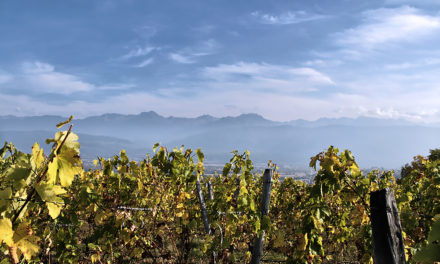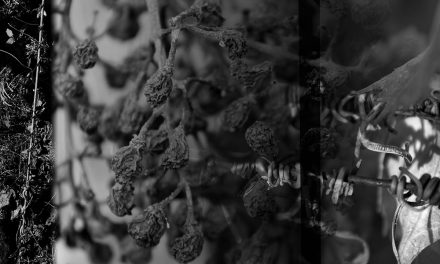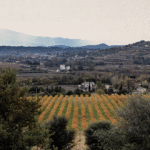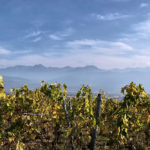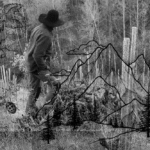En France comme dans le reste du monde, les vins vivants (1) connaissent un succès croissant depuis une dizaine d’années. Cavistes indépendants, vignerons et amateurs s’accordent sur les qualités de ces vins. Alors, de quoi cet engouement est-il symptomatique ?
Éléments de réponses sous l’angle d’une réflexion sur le productivisme agricole et le terroir.
01. Aux origines de l’agriculture productiviste
« Après la Deuxième Guerre Mondiale, les Américains introduisirent l’agriculture chimique moderne au Japon. Ceci permit au paysan japonais de produire approximativement les mêmes rendements qu’avec une méthode traditionnelle, mais son temps de travail était réduit de plus de la moitié. Cela sembla un rêve devenu réalité, et, en une génération, presque tout le monde se mit à l’agriculture chimique.
Pendant des siècles les paysans ont maintenu la matière organique dans le sol en pratiquant la rotation des cultures, en ajoutant du compost et du fumier et en faisant de l’engrais vert. Une fois que ces pratiques furent négligées et que le fertilisant chimique à action rapide les remplaça, l’humus s’épuisa en une seule génération. La structure du sol se détériora ; les récoltes s’affaiblirent et devinrent dépendantes des éléments nutritifs chimiques. En compensant la réduction de travail animal et humain, le nouveau système mina les réserves de fertilité du sol. » Extrait tiré du livre « La révolution d’un seul brin de paille (1978) » par Masanobu Fukuoka.
Il y a bientôt 70 ans, à la sortie de la seconde guerre mondiale, le besoin immédiat de produire en quantité pour nourrir une population affamée va voir naître un modèle d’agriculture intensive fondée sur le trio chimique « désherbant-engrais-pesticides ». La viticulture ne sera pas épargnée par ces « prodigieuses » méthodes culturales qui vont progressivement l’éloigner de la vérité du terroir en appauvrissant les sols et en mettant la vigne sous perfusion.
Au fil des années, et bien au-delà des besoins de l’après-guerre, ce modèle a créé une dépendance économique chez les agriculteurs et des revenus garantis pour l’industrie phytosanitaire qui fournit le monde rural en produits de toutes sortes depuis bientôt 50 ans, apportant toujours plus de surenchère chimique dans le « progrès » viticole.
Au départ, ce fut le désherbant, un produit très attractif qui promettait de réduire la quantité de travail à la vigne afin de conserver des sols « propres », qui était une préoccupation essentielle à l’époque. Une fois passé l’effet magique des 5 ou 6 premières années, ces produits réduisirent significativement les micro-organismes du sol. L’expression du terroir fut effacée par l’affaiblissement des sols.
Pour remédier à ce « coup de mou », dont on minora l’impact sur le long terme, l’industrie développa alors le marché plutôt lucratif des engrais chimiques (N,P,K(2)). En plus de ne nourrir qu’artificiellement la vigne, ne répondant que temporairement à un problème plus profond, ils ne comblèrent pas les besoins des forces de vie du sol, alors mis à mal. Pire encore, cela créa des déséquilibres aggravés sur le plus long terme en exposant la vigne, entre autres, aux maladies cryptogamiques.
Puis, pour lutter contre les maladie cryptogamiques, l’industrie développa les pesticides et autre produits systémiques (3)… La boucle était bouclée et la vigne en sursis.
Toutes ces béquilles chimiques coupent la vigne de son environnement et l’éloignent toujours un peu plus de l’originalité du terroir, créant toujours plus de dépendances aux molécules fabriquées par l’industrie. Aujourd’hui, ce modèle est dans une impasse, confronté à la surproduction de piètre qualité, à la crise économique et aux coûts de maintien dans ce système qui explose.
02. Rompre avec le modèle intensif
Depuis une quinzaine d’années, aux quatre coins de la France, des vignerons ont estimé que le progrès était ailleurs, peut-être dans le retour à des pratiques plus anciennes, à l’écoute de la nature, en développant une observation sensible de la vigne. Ils ont alors changé leur approche de la vigne et de la vinification, cherchant une meilleure expression de leurs terroirs. Leur travail est guidé par les précurseurs qui avaient commencé à remettre en question le modèle intensif dès les années 80 tels Marcel Lapierre, Jean-Paul Thévenet ou Yvon Métras, travaillant dans le Beaujolais. Pas facile quand on a été formé à l’école agricole où les intérêts agrochimiques restent très présents ou que l’on hérite du geste de ses parents, pris au piège des traitements systémiques. Prendre cet autre chemin demande beaucoup de courage, de convictions et de passion mais surtout un travail conséquent à la vigne comme au chai.
Dans ce changement de perception, le chantier le plus important est la réappropriation de son travail, des outils pour y arriver et la transformation des modes de cultures. Sortir du tout motorisé, protéger les consommateurs et se protéger des produits prescrits par l’industrie. En résumé, sortir des erreurs agricoles, pour reprendre la formule de Nicolas Joly(4).
Portés par la dynamique agroécologique, ces vignerons appliquent tout ou partie des principes de la biodynamie, avec succès, et s’essayent également à la permaculture. Leur crédo : faire mieux avec moins :
- Moins de traitements, même naturels. Il y a urgence pour les sols, fatigués.
- Moins d’entretien à la vigne : réintroduire le labour avec parcimonie, enherber les rangs ainsi que laisser paître les troupeaux ovins à l’automne.
- Moins d’intervention au chai : supprimer les intrants, doser le soufre homéopatiquement (ou s’en passer, si possible) et éviter la chaptalisation.
Mais également travailler en harmonie avec la nature, la faune, la flore : favoriser la biodiversité et remettre l’homme à sa juste place dans cet environnement.
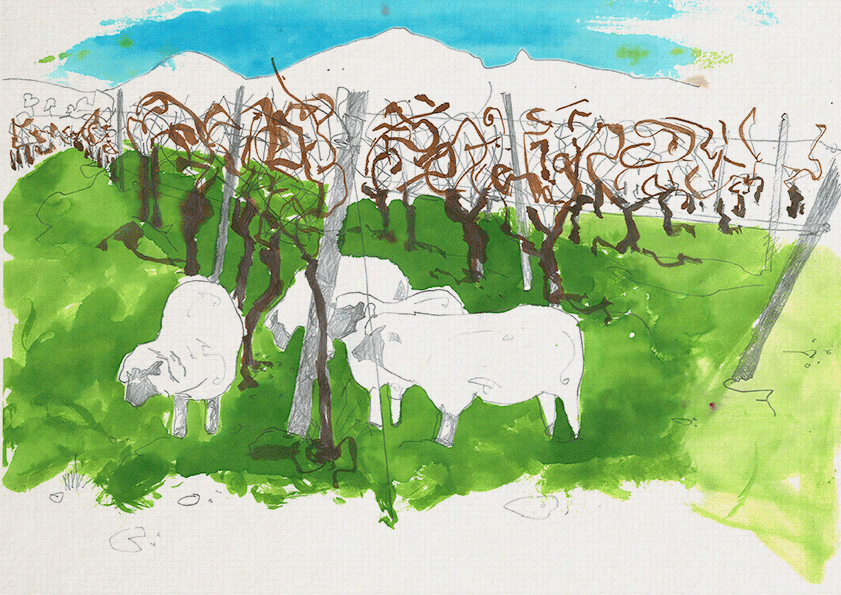
03. Le rôle de l’homme dans l’expression du terroir
Au travers de tout ce travail en harmonie avec la nature, empreint de bons sens, le but est de proposer des vins vivants, ancrés dans leur terroir.
Le terroir ne peut pas être considéré en viticulture selon un point de vue strictement naturaliste où seuls les sols, le climat et l’exposition feraient de grands vins. Comme nous l’avons vu précédemment, l’incapacité de certaines pratiques agricoles à comprendre la nature peut réduire à néant l’expression du terroir dans certains vins bénéficiant pourtant d’une AOC. Le rôle de l’homme, son savoir-faire basé sur l’observation et la compréhension du vivant est donc un élément indissociable de la notion de terroir.
Les vins vivants sont révélateurs de leur terroir car les raisins dont ils sont issus ont été cultivés selon une expérience et une sensibilité remises aujourd’hui au centre de la viticulture par ces vignerons qui ont compris que des raisins sains à la vendange avaient toutes les chances de porter des levures indigènes (5). Ces souches de levures qui prospèrent dans une vigne tenue le plus naturellement possible sont les témoins des variations climatiques d’une saison et procurent toutes la subtilité des vins vivants.
Le terroir, dans sa compréhension actuelle, ne peut plus être figé dans une vision archaïque maintenu par des organismes d’état et de puissants intérêts économiques. Il est évolutif, empreint de pluriculturalisme et d’expériences croisées. Les néo-vignerons japonais ou scandinaves établis en France, auront une toute autre approche que les vignerons français parce que leur expérience, leur goût, leur culture sont différents. Ils apportent une autre conception de la viticulture qui enrichit alors l’histoire des terroirs viticoles français. Le métissage est une source importante de diversité dans le vin et l’expression des terroirs.
S’engager au-delà de son domaine
S’engager dans cette voie détonne encore aujourd’hui dans le paysage viticole français. Face à cette incompréhension, le souci de mieux faire ne peut s’arrêter aux portes de son domaine. Faire valoir le bon sens amène aussi à des prises de décision fortes comme refuser l’application par arrêté de traitements (Emmanuel Giboulot), sortir des AOC spoliées, questionner des pratiques en cours dans la viticulture conventionnelle ainsi que le rapport aux énergies fossiles et leur impact sur l’environnement.
Ces vignerons gardent leurs distances avec le discours officiel qui promeut une « agriculture raisonnée », la « lutte intégrée » ou encore « une agriculture garante de la qualité de vie rurale et des paysages ».
Sur leurs terres, ils ont fait des choix concrets : ils pratiquent le plus souvent une agriculture à petite échelle, n’excédant que très rarement plus d’une dizaine d’hectares. Ils favorisent les petites parcelles, intercalées de haies végétales, où l’agriculture motorisée est souvent remplacée par la main d’œuvre ou des engins de plus petites tailles tels le quad ou le chenillard. Nombre de ces domaines pratiquent la polyculture, pratique fondatrice en biodynamie – plus d’information à ce sujet et sur la notion d’organisme agricole sur le site du Mouvement pour l’Agriculture BioDynamique (MABD).
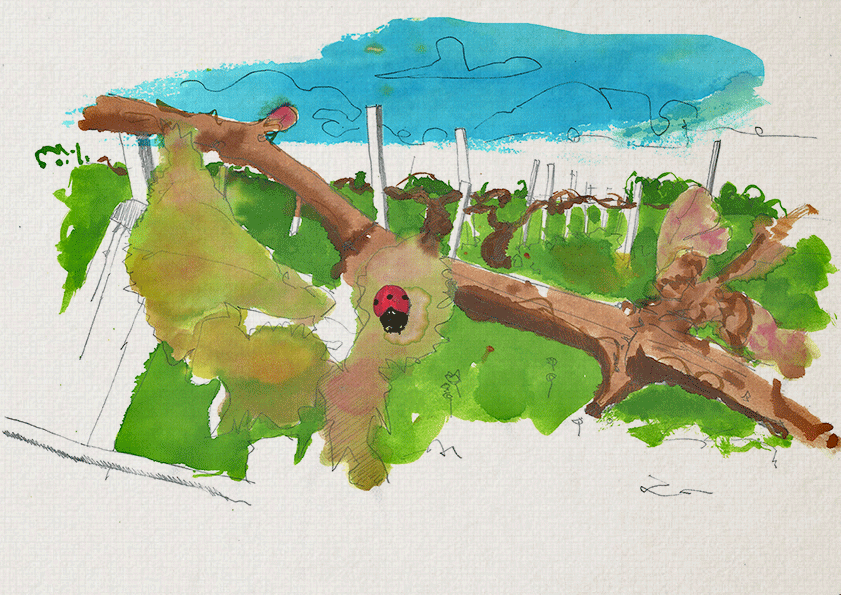
04. La perception du consommateur
Aujourd’hui, si ces vignerons persévèrent à emprunter cette voie, encouragés par des résultats toujours plus satisfaisants, c’est non seulement par conviction personnelle et pour sortir la viticulture de l’impasse chimique, mais également parce que leurs vins rencontrent enfin leur public.
Nous sommes aujourd’hui à une période charnière où un nombre grandissant de consommateurs souhaitent à la fois mieux consommer (pour le plaisir et plus sain) mais ils sont aussi conscients des enjeux alimentaires et leurs impacts sur l’environnement. Le choix de soutenir ces vignerons a une implication sociale, voir politique. Ce n’est pas uniquement par effet de mode ou par un manque de connaissance comme le railleront les détracteurs.
Il y a aujourd’hui une véritable prise de conscience et un intérêt pour des modes de production plus soucieux de l’environnement, remettant en cause la pensée unique fondatrice de l’agriculture moderne. Aux yeux du consommateur, le renouveau passe par la qualité de vins qui doivent exprimer la typicité du terroir et soutenir les circuits courts.
Ensemble, vignerons alternatifs, cavistes indépendants et amateurs sont engagés dans cette voie, cette révolution en cours, qui a choisi comme rempart au productivisme la convivialité de vins sains et fidèles à leurs terroirs.
1 Vins vivants : sont considérés comme vins vivants, les vins issus de l’agriculture bio ou biodynamique, n’ayant pas recours aux intrants au chai et très peu au soufre, voire pas du tout, à la mise en bouteille. Des vins non standardisés, exprimant en toute transparence l’originalité de leur terroir.
2 N,P,K : (source Wikipédia) Azote (N), phosphore (P), potassium (K); on parle des engrais ternaires de type NPK si les trois sont associés. Sinon, on parle des engrais binaires NP, NK, PK ou d’engrais simples s’ils sont constitués d’un seul de ces éléments N ou P ou K.
Le trio « NPK » constitue la base de la plupart des engrais vendus actuellement. L’azote est le plus important d’entre eux, et le plus controversé à cause du phénomène de lixiviation, lié à la forte solubilité des nitrates dans l’eau. Au XXIe siècle, 1 % de l’énergie consommée par les humains sert à produire de l’ammoniac, produit qui fournit la moitié de l’azote nécessaire à la fabrication des engrais utilisés en agriculture.
L’azote : Sous forme chimique (ion NO3– dit « nitrate »), il est particulièrement soluble dans l’eau et utilisé en excès il est à l’origine de la pollution azotée. Le phosphore : Les engrais phosphatés chimiques contiennent une multitude d’éléments minéraux secondaires et d’oligo-éléments dont de petites quantités d’uranium (radionucléide) et de cadmium (métal lourd). Le potassium : Le potassium se trouve dans la cendre de bois, qui peut par ailleurs contenir des métaux lourds, ou des radionucléides dans certaines régions.
L’utilisation des engrais entraîne deux types de conséquences qui peuvent comporter des risques sanitaires (atteinte à la santé de l’homme) ou des risques environnementaux (dégâts sur les écosystèmes).
Le risque sanitaire le plus connu est celui relatif à la consommation par le nourrisson d’eau riche en nitrate, résultant de la fertilisation azotée.
Le risque environnemental le plus cité est celui de la pollution de l’eau potable ou de l’eutrophisation des eaux, lorsque les engrais, organiques ou minéraux, répandus en trop grande quantité par rapport aux besoins des plantes et à la capacité de rétention des sols, qui dépend notamment de sa texture, sont entraînés vers la nappe phréatique par infiltration, ou vers les cours d’eau par ruissellement.
Un risque environnemental moins cité, et pourtant très important lui aussi, est la contribution au réchauffement climatique, due aux fortes émissions, après épandage, d’oxydes d’azote, notamment le protoxyde d’azote (N2O), qui est un puissant gaz à effet de serre, à fort potentiel de réchauffement global mais à durée de résidence modéré (de l’ordre de 100 ans).
Plus généralement, les conséquences de l’utilisation des engrais, qui peuvent comporter des risques et qui sont soumises à la critique, sont les suivantes :
- Effets sur la qualité des sols, leur fertilité, leur structure, l’humus et l’activité biologique ;
- Effets sur l’érosion ;
- Effets d’eutrophisation des eaux douces et marines liés au cycle de l’azote et de pollution diffuse induite par la toxicité des nitrates dans l’eau potable ou pour certaines espèces, et par leur caractère eutrophisant et favorisant la turbidité de l’eau;
- Effets liés à la dégradation des engrais inutilisés, qui émettent des gaz à effet de serre, oxydes d’azote (protoxyde d’azote N2O et N2O4), dans l’atmosphère ;
- Effets d’eutrophisation des eaux douces et marines liés au cycle du phosphore (eutrophisation voire Dystrophisation) ;
- Effets liés aux autres éléments nutritifs : potassium, soufre, magnésium, calcium, oligo-éléments ;
- Effets liés à la présence de métaux lourds : cadmium, arsenic, fluor, présents dans les engrais minéraux et dans les lisiers de porc ;
- Effets liés à la présence d’éléments radioactifs (significativement présents dans les phosphates),
- Effets sur les parasites des cultures ;
- Effets sur la qualité des produits ;
- Pollution émise par l’industrie de production des engrais chimiques et certains engrais organiques ;
- Utilisation d’énergie non renouvelable pour leur transport et épandage ;
- Épuisement des ressources minérales ;
- Effets indirects sur l’environnement, dont par la mécanisation pour l’agriculture intensive, et les épandages.
3 Produits systémiques : On parle de produit phytosanitaire systémique quand celui-ci est absorbé par la plante pour être ensuite véhiculé par la sève : la plante est ainsi entièrement contaminée par le produit, la rendant toxique aux insectes qui viennent l’attaquer. Source : Jardiner, le Monde, Octobre 2017.
4 Le vin, la vigne et la biodynamie, Nicolas Joly, Sang de la Terre, avril 2017.
5 Levures indigènes : Présentes naturellement sur la peau des raisins. Les levures indigènes présentes sur la peau des raisins permettent une fermentation spontanée. Ce type de vinification est délicat et est lié au savoir-faire du vigneron. Il devra d’abord travaillé en agriculture saine, sans produits chimiques et avoir une cave très propre. Il devra être attentif au démarrage rapide de la fermentation pour éviter les risques de maladie. Source : Nature et vins.fr, Octobre 2017.

